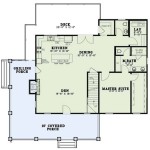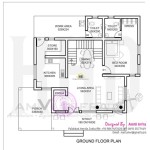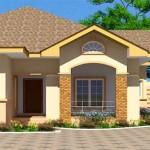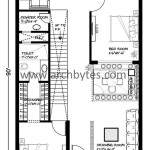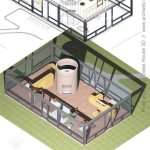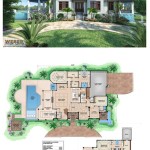Exploring House Plans in Australia: A Comprehensive Guide
The process of building a new home or undertaking a significant renovation in Australia begins with a crucial step: selecting the right house plans. House plans, often referred to as blueprints or architectural drawings, serve as the roadmap for construction, detailing the layout, dimensions, materials, and specific features of a dwelling. Understanding the various aspects of Australian house plans is essential for homeowners, builders, and developers alike, ensuring a successful and efficient building project.
Australia's diverse climate, varied landscapes, and evolving lifestyle preferences significantly influence house plan design. From coastal residences designed to withstand harsh weather conditions to energy-efficient homes optimized for the Australian sun, a multitude of options are available. Navigating this landscape requires careful consideration of individual needs, budget constraints, and local building regulations.
This article provides a comprehensive overview of house plans in Australia, covering key considerations, different types of plans, factors affecting cost, and resources for finding suitable designs. The aim is to equip individuals with the knowledge necessary to make informed decisions throughout the house planning and construction process.
Understanding Key Considerations Before Selecting House Plans
Before delving into specific house plans, it is vital to establish a clear understanding of personal requirements and constraints. Several factors play a critical role in informing the selection process and ensuring the final design aligns with individual needs.
Lifestyle and Family Needs: The intended occupants and their lifestyle are paramount. Consider the number of bedrooms and bathrooms required, the need for home office space, the importance of indoor-outdoor flow, and the style of living preferred (e.g., open-plan living versus separate living areas). Future needs should also be anticipated, such as the potential for a growing family or the desire for aging-in-place modifications. A detailed assessment of these factors will help narrow down the options and ensure the house plan caters to the specific needs of the residents.
Budget: Establishing a realistic budget is crucial. The cost of a house plan is only one aspect of the overall construction cost. Other expenses include land acquisition, building materials, labour, permits, and landscaping. It is advisable to obtain preliminary cost estimates from builders or quantity surveyors to gauge the affordability of different house plan options. Opting for a simpler design or modifying an existing plan can often help reduce construction costs. Maintaining a contingency fund is also recommended to account for unexpected expenses that may arise during construction.
Land Characteristics: The specific characteristics of the land will significantly influence the type of house plans that are suitable. Factors such as block size, shape, slope, orientation, and soil conditions need to be carefully assessed. A sloping block, for example, may require a split-level design or extensive excavation, adding to the complexity and cost of construction. Furthermore, the orientation of the block will affect the amount of sunlight the house receives, influencing the placement of windows and the design of energy-efficient features. A site survey conducted by a qualified surveyor or engineer is essential to gather this information.
Local Building Regulations and Council Approvals: Compliance with local building regulations and council requirements is mandatory. These regulations dictate aspects such as setbacks, building height restrictions, site coverage, and environmental considerations. It is crucial to consult with the local council or a building surveyor to understand the specific requirements for the property. Failure to comply with these regulations can result in costly delays or even the rejection of the building application. Some areas may also have specific design guidelines that need to be adhered to, particularly in established neighbourhoods or heritage areas.
Types of House Plans Available in Australia
A wide array of house plan options are available in Australia, catering to different preferences, budgets, and site constraints. These plans can be broadly categorized into pre-designed plans, custom-designed plans, and project home plans.
Pre-Designed Plans (Ready-Made Plans): Pre-designed house plans are existing designs that have been created by architects or building designers. These plans offer a cost-effective and time-saving option, as the design work has already been completed. Pre-designed plans are typically available in a range of styles and sizes, catering to different block sizes and family needs. The primary advantage of pre-designed plans is their affordability and the ability to visualize the finished product through display homes or online renderings. However, they may require modifications to suit specific site conditions or individual preferences. These modifications could include adjustments to the floor plan, window placement, or exterior finishes. Reputable providers of pre-designed plans will typically offer a range of modification options to accommodate these needs.
Custom-Designed Plans: Custom-designed house plans are created specifically for an individual client, taking into account their unique requirements, lifestyle, and site characteristics. This option provides the greatest flexibility and allows for the creation of a truly bespoke home. Custom designs involve working closely with an architect or building designer to develop a plan that perfectly suits the client's needs and the constraints of the site. While custom designs offer the highest level of personalization, they are typically more expensive and time-consuming than pre-designed plans. The cost will depend on the complexity of the design and the level of involvement required from the architect. However, the result is a home that is perfectly tailored to the client's needs and reflects their individual style.
Project Home Plans: Project home plans are offered by volume builders and typically include a fixed price for the construction of the home. These plans are generally pre-designed but may offer some customization options, such as the choice of finishes and colours. Project homes are a popular option due to their affordability and the convenience of a fixed-price contract. However, the level of customization is typically limited, and the designs may not be as unique or tailored as custom-designed homes. It is important to carefully review the inclusions and exclusions of the project home contract to understand exactly what is included in the price. Site costs, such as excavation and retaining walls, may not be included in the base price and can significantly increase the overall cost.
Beyond these main categories, there are specialized house plans designed for specific purposes, such as granny flats, duplexes, and acreage properties. Granny flats are self-contained living units that are typically located on the same property as the main house. Duplexes are two separate dwellings that are attached to each other. Acreage properties require house plans that are designed to take advantage of the larger land area and may include features such as verandas, pools, and outbuildings.
Factors Influencing the Cost of House Plans
The cost of house plans in Australia can vary significantly depending on several factors, including the type of plan, the complexity of the design, the location of the property, and the experience of the architect or building designer.
Type of Plan: As previously mentioned, custom-designed plans are typically more expensive than pre-designed or project home plans. This is because custom designs require more time and effort from the architect or building designer. Pre-designed plans offer a cost-effective option, as the design work has already been completed. Project home plans may also be a budget-friendly option, but the level of customization is limited.
Complexity of Design: The complexity of the design will also impact the cost of the house plans. A simple, single-story design will typically be less expensive than a complex, multi-story design with intricate details. Features such as curved walls, vaulted ceilings, and complex rooflines will add to the cost of the design. The use of sustainable design principles and energy-efficient features may also increase the cost of the house plans, but these features can result in long-term savings on energy bills.
Architect or Building Designer Fees: Architects and building designers charge fees for their services, which can vary depending on their experience, location, and the scope of the project. Architects typically have more extensive training and experience than building designers and may charge higher fees. However, building designers can be a more affordable option for smaller or less complex projects. Fees can be charged on an hourly basis, as a fixed fee, or as a percentage of the total construction cost. It's important to obtain quotes from several architects or building designers and compare their fees and services before making a decision.
Additional Services: In addition to the basic house plans, architects or building designers may offer additional services, such as site analysis, interior design, landscape design, and project management. These services can add to the overall cost of the project but can also provide valuable expertise and support throughout the construction process. It's important to discuss these services with the architect or building designer and determine which ones are necessary for the project.
Acquiring house plans is an investment in the future home. By carefully considering all the factors described, a house plan that aligns perfectly with requirements, budget, and long-term vision can be achieved.
Small Homes Top 5 Floor Plans Designs For Houses Architecture Design

Innovative House Floor Plans For Every Style Aston Homes
Serenity House Plan For Narrow 10 Metre Lots Brighton Homes

Sassafras Lowset House Plan By Www Buildingbuddy Com Au Plans 4 Bedroom Design

Http Www Newgenerationhomes Com Au New Home Designs The Caspian Building House Plans Design Architectural Floor

4 Bedroom House Plans 1931 Sq Foot 179 M2 Modern Plan Contemporary On Today

Narrow Land House Plans 208 1 M2 2238 Sq Feet 4 Bedroom Modern Home Premium Concept Set Of

Jackwood Sloping Lot House Plans Plan Floor Home Design

47 Flat 509 Sq Feet Or 35 M2 1 Bedroom House Plan Home Blueprints Concept Plans For

Home Designs Qld Clarendon Homes

